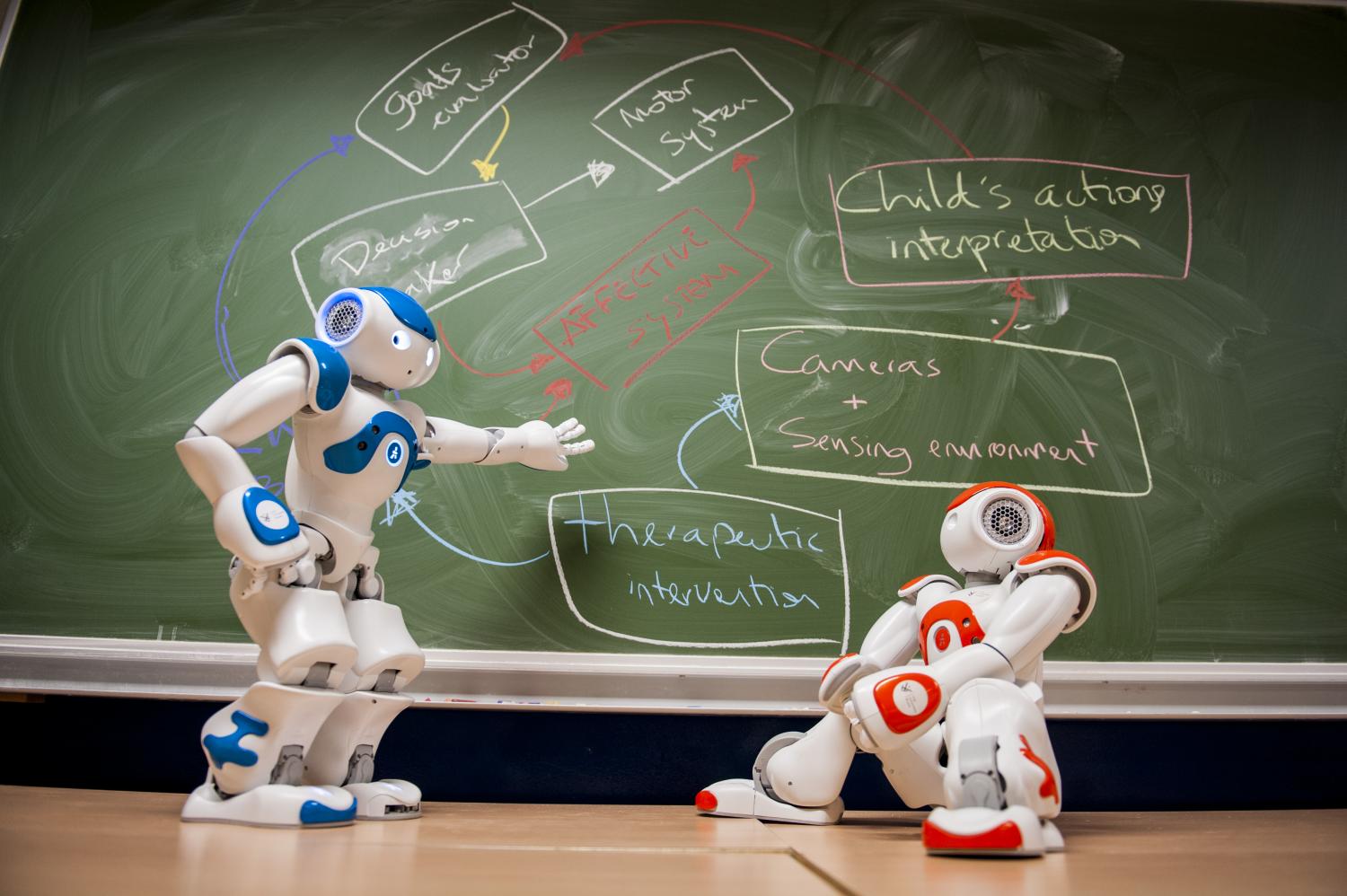Humanoid Robots in Autism Education
Exploring educator and therapist perceptions through UX research.

User Research
Study
An educational and therapeutic sector exploring the role of humanoid robots required a research-driven approach to understand perceptions, barriers, and opportunities for adoption.
They needed research that not only examined the potential of humanoid robots in autism education but also captured the realities of how teachers and therapists perceive these technologies in practice. We focused on designing a mixed-methods study that combined semi-structured interviews with Likert-scale analysis, guided by established frameworks such as TAM, UTAUT, and STS.
The research process incorporated open-ended interviews to surface rich, qualitative insights, paired with quantifiable measures to identify patterns in attitudes and adoption readiness. Each part of the study was carefully crafted to highlight not just the perceived usefulness of robots, but also the systemic barriers, such as cost, training, and institutional support, that influence real-world implementation.
We implemented a rigorous coding and analysis process, ensuring that every theme was tied back to theory while still grounded in the lived experience of educators and therapists. This approach helped us uncover both enthusiasm and hesitation, showing that successful adoption depends on embedding robots into supportive socio-technical systems rather than relying on technology alone.
Since completing the study, the findings have contributed to a growing body of knowledge on inclusive technology and provided actionable insights for organizations considering robotics in special education. The project demonstrated how research grounded in both human behavior and systemic context can guide not just product design, but the strategies needed for adoption and long-term impact.
As part of my Master’s thesis in Product Management and UX Design, I worked in collaboration on a study examining how humanoid robots are perceived as tools to support children with autism in educational and therapeutic settings. Together, we designed and conducted semi-structured interviews with eight professionals in the Northeastern U.S., including teachers, therapists, and special education specialists.
The research was guided by three complementary frameworks:
- Technology Acceptance Model (TAM): usefulness & ease of use
- Unified Theory of Acceptance & Use of Technology (UTAUT): social influence & facilitating conditions
- Socio-Technical Systems Theory (STS): alignment with institutional and systemic structures
Research Approach
The interview guide was structured in four parts:
- Warm-up & Demographics — capturing professional background and prior exposure to assistive technology.
- Perceptions of Usefulness & Ease of Use (TAM) — exploring whether robots were seen as supportive tools or barriers.
- Social Influence & Support (UTAUT) — probing how colleagues, administrators, and parents might influence adoption.
- Systems Fit (STS) — assessing how well robots might integrate into existing routines, budgets, and infrastructures.
Each interview combined open-ended questions (for rich narratives) with Likert-scale items (1–5) to quantify attitudes. This mixed approach allowed me to pair qualitative depth with quantitative clarity.
For example, participants rated statements such as:
- “I believe humanoid robots could be useful in supporting communication and social skills.”
- “I would feel comfortable adopting a humanoid robot in my classroom/therapy practice if training were provided.”
Responses were coded into frequency patterns and analyzed using thematic coding alongside quantitizing techniques. This meant that beyond counting ratings, I was able to tie numerical results to context, for example, a mid-range “3” on usefulness often reflected uncertainty rather than neutrality, something the qualitative data clarified.
Key Insights
- Promise & Potential: Professionals recognized robots as useful for structured, predictable interactions that support turn-taking, communication, and social routines.
- Concerns & Constraints: Ease of use, technical reliability, and sustainability were recurring concerns. Robots were seen as complements to, not replacements for, human educators.
- Social Influence: Adoption depended heavily on endorsement from colleagues, administrators, and parents, with younger or more tech-oriented families viewed as more receptive.
- Systemic Readiness: Positive perceptions often faded when cost, training, or institutional support were lacking.
- Ethical & Cultural Layers: Participants raised concerns about over-reliance, equity of access, and the need to preserve authentic human interaction.
Impact
This project sharpened my ability to design rigorous, theory-informed UX research that blends qualitative depth with quantitative validation. The use of mixed methods, semi-structured interviews, Likert-scale analytics, and socio-technical framing, enabled insights that went beyond surface attitudes and revealed the systemic conditions required for meaningful adoption.
At Maison de Méthode, I bring the same approach: grounding design research in user perceptions, measurable patterns, and systemic contexts to help organizations make decisions with confidence and clarity.

